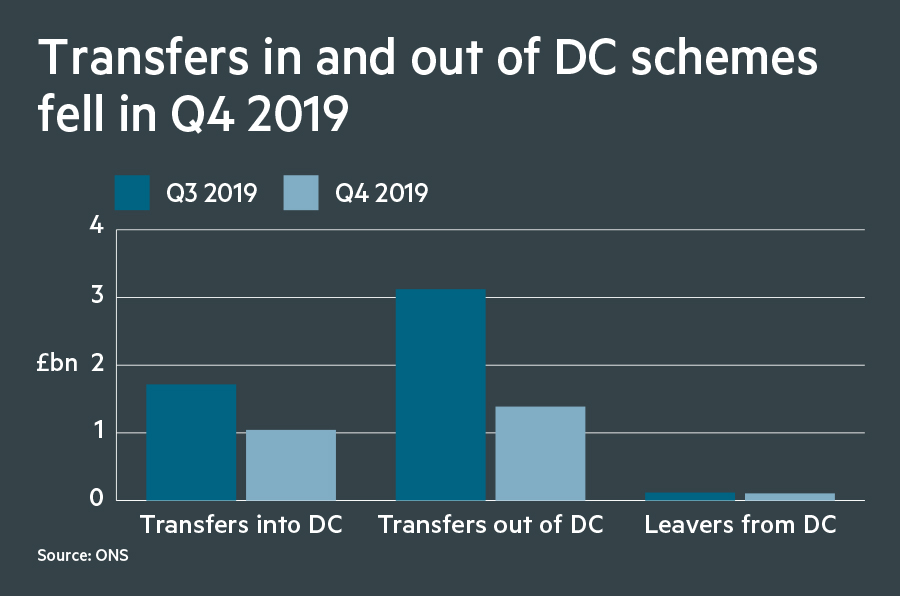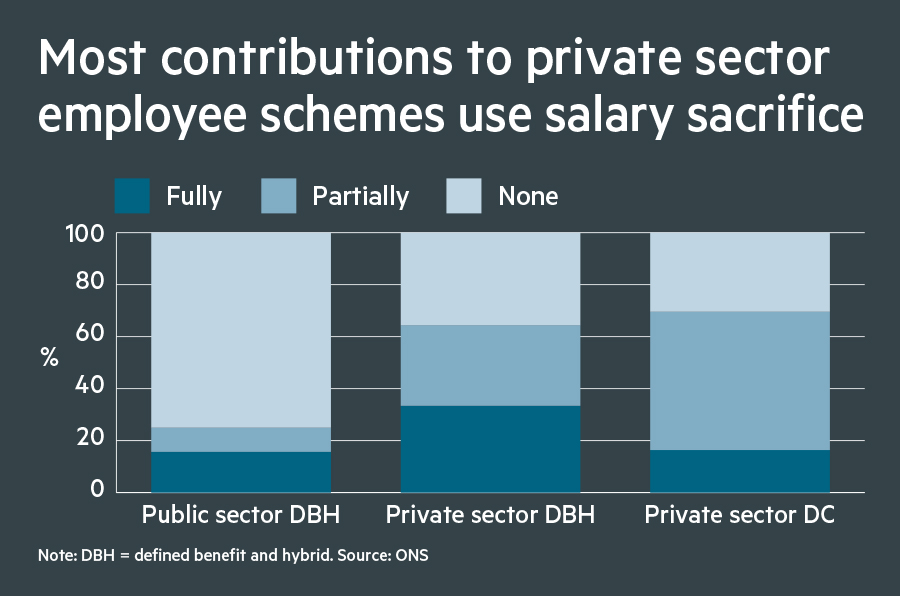Data crunch: A massive spike in defined contribution transfers could signal frantic consolidation in the master trust sector, as experts call for clearer data from the Office for National Statistics.
The new ONS Financial Survey of Pension Schemes shows huge volatility, leaving experts grappling in the dark for explanations.
Transfers out of DC schemes halved to £1.4bn in the fourth quarter of 2019 from £3.12bn in the third quarter 2019. Similarly, transfers into DC schemes declined steeply to £1.04bn from £1.7bn over the same period. Two experts cited the impact of Christmas when people are less likely to make financial decisions on the numbers.
Seeing it presented this way is a bit like being told that someone owns three things that are either houses or horses
David Robbins, Willis Towers Watson
But Kate Smith, head of pensions at Aegon, points to the bulk transfer activity captured by the dataset.
“Most of the activity between DC occupational pension schemes is likely to be due to the impact of the booming master trust market, which accelerated post-authorisation,” she says.
“Many single employer trust-based schemes are transferring their assets into master trusts.” 
She says a third-quarter spike was the result of ceding trustees waiting for authorisation to conclude before pressing ahead with their chosen provider. Consolidation is also said to be taking place between master trusts, as even authorised providers conclude they lack scale and seek to wind up.
“The impact of Covid-19 is likely to have dampened this activity, but we expect to see this trend pick up later in the year,” Ms Smith says.
ONS data presentation unhelpful
The ONS is letting the pensions industry down when it comes to data, according to experts. Despite a wealth of material and revamped presentation, it still offers only a partial and opaque picture of workplace pensions.
David Robbins, senior consultant at Willis Towers Watson, says grouping bulk and individual transfers together hinders insight into saver behaviour.
“In the DC space, the bulk transfer of a scheme’s membership and assets to a master trust is a very different phenomenon from individuals choosing to move their old pots to a new employer’s scheme, or transfer it to a personal pension. They’re both interesting things to measure, but just giving the total doesn’t shed much light: the whole is rather less interesting than the sum of its parts,” he says.
Mr Robbins adds: “This is perhaps even more true with transfers out of defined benefit schemes, where individual transfers to DC schemes are grouped together with bulk DB-DB transfers and with buyouts.” 
He notes that the ONS has “much more interesting data than it has published”, adding: “Seeing it presented this way is a bit like being told that someone owns three things that are either houses or horses.”
However, he notes that the ONS is stymied because “bulk transfers will be so few in number, disclosing them does not pass its confidentiality tests”.
Salary sacrifice takes hold
Kay Ingram, director of public policy at LEBC Group, says of the ONS report: “Looking only at occupational pensions data is an anachronism from the pre-2006 pension savings tax regime.
“It would be more relevant to inform future policy decisions by separating the statistics on workplace pension saving into DB schemes on the one hand and DC on the other, whether occupational trust-based schemes or contract-based schemes.”
One nugget that, according to LCP partner Steve Webb, was genuinely surprising was “the extent to which salary sacrifice is now embedded in private sector DC pensions, with more than two-thirds of contributions having some element of salary sacrifice; this may help to explain why the Treasury has been so wary about abolishing it”.






















